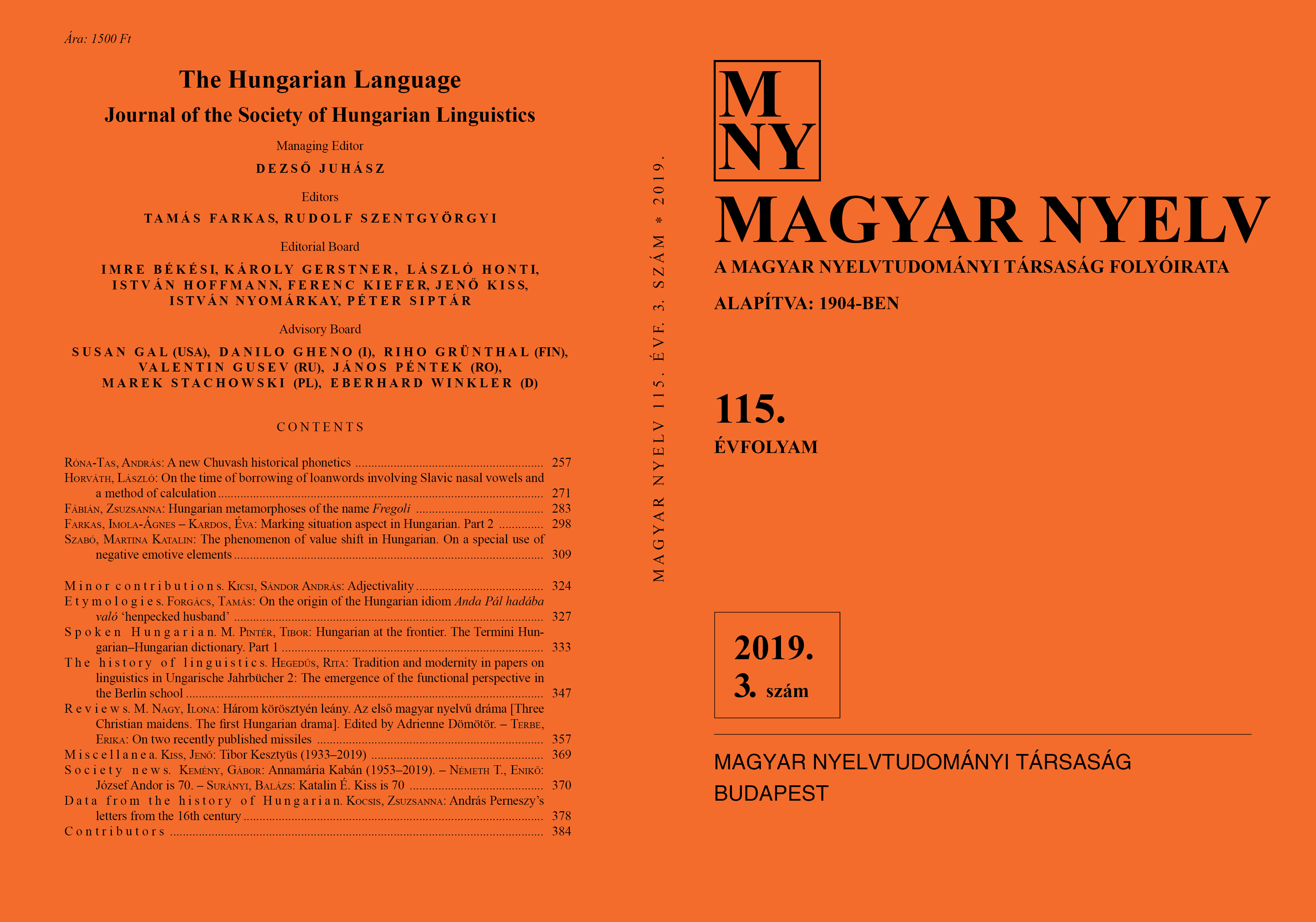On the origin of the Hungarian idiom Anda Pál hadába való ‘henpecked husband'
DOI:
https://doi.org/10.18349/MagyarNyelv.2019.3.327Keywords:
idioms, origin of idioms, phraseology, historical phraseology, lexicologyAbstract
Old compilations of Hungarian phraseological units contain several obsolete expressions for ‘wife-ridden’, one of which is Anda Pál hadába való, lit. ‘a member of Paul Anda’s army’. Our earlier dictionaries – following Szirma y's Hungaria in Parabolis – relate it to Anda Pál, a 17th-century cavalry corporal, who asked for leave every weekend to go home to his wife. This paper claims, however, that the story is an etiological anecdote and Anda is in fact an archaic charactonym meaning ‘silly, simpleminded’. It was originally the present participle of and-, an obsolete root of Modern Hungarian andalodik ‘get into reverie’ and andalít ‘put into reverie’. The purpose of adding Pál ‘Paul’ is only to personify the adjectival meaning and even had, whose meaning has narrowed down to ‘army’ in Modern Hungarian, may have been used in its earlier meaning ‘kinship’. Thus the original meaning of Anda Pál hadába való may have been ‘a member of the group of (wife-ridden) silly, simple-minded husbands’.
Downloads
Published
Issue
Section
License
Copyright (c) 2024 Tamás Forgács

This work is licensed under a Creative Commons Attribution-NonCommercial-NoDerivatives 4.0 International License.
Magyar Nyelv is a Diamond Open Access periodical. Documents can be freely downloaded and duplicated in an electronic format, and can be used unchanged and with due reference to the original source. Such use must not serve commercial purposes. In the case of any form of dissemination and use, Hungarian Copyright Act LXXVI/1999 and related laws are to be observed. The electronic version of the journal is subject to the regulations of CC BY-NC-ND (Creative Commons – Attribution-NonCommercial-NoDerivatives).
The journal permits its authors, at no cost and without any temporal limitation, to make pre-print copies of their manuscripts publicly available via email or in their own homepage or that of their institution, or in either closed or free-for-all repositories of their institutions/universities, or other non-profit websites, in the form accepted by the journal editor for publication and even containing amendments on the basis of reviewers’ comments. When the authors publicize their papers in this manner, they have to warn their readers that the manuscript at hand is not the final published version of the work. Once the paper has been published in a printed or online form, the authors are allowed (and advised) to use that (post-print) version for the above purposes. In that case, they have to indicate the exact location and other data of the journal publication. The authors retain the copyright of their papers; however, in the case of an occasional secondary publication, the bibliographical data of the first publication have to be included.



